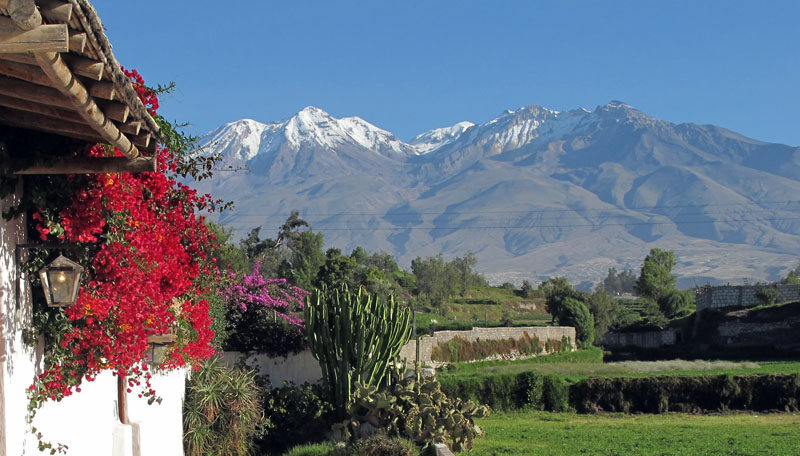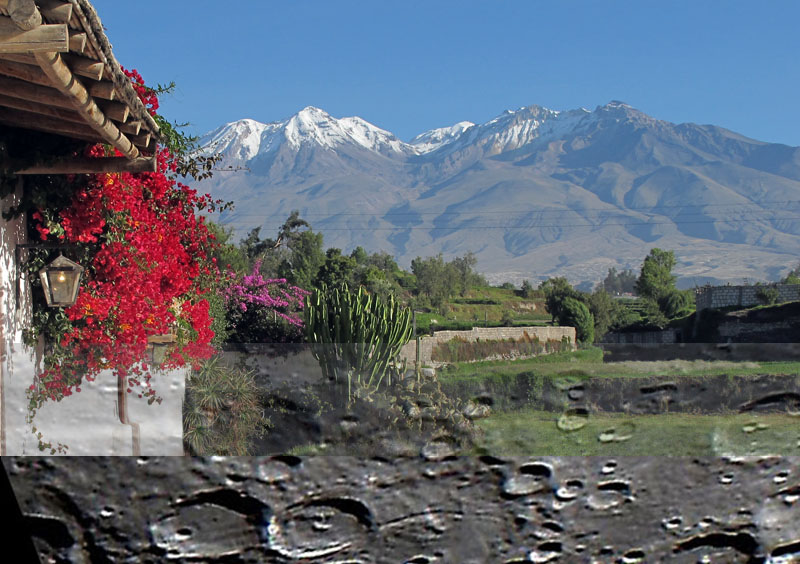Spread your arms as wide as you can. Imagine your presence extending from genetics, in your left hand accross your body, to the nutrients that build your cells and tissues, your organs, your bodily systems – to your body in the centre. On the right, join your hands with your communities, your family, your pets, your environment, the organizations you are a part of, your friends, perhaps your church, your employers, your government, and the corporations around you.
Imagining illness:
Imagine the different illnesses, from genetic deformities to cellular tissue diseases like cancer, to diseases of the joints and bones like arthritis, diseases of the heart and circulatory systems, diseases of the brain, imagine illnesses of the spirit like fear and hatred, imagine illnesses of the communities like murder – often a family illness, as well as war, torture, genocide. Imagine each illness as a small, almost insignificant hole in the ground close to the line of your body. In the distance, imagine the most serious illness, large holes and finally the cliff of death. The sun rises every day on hope, and casts shadows of doubt – often setting on death. All of this space contains all of the gradations of illness between minor symptoms and ultimately death. It might look like a landscape on a dead planet or moon.
Your body is in the centre of this field of possible illnesses. When you die, your body dies, if you have managed to reproduce, your genetics do not die. Your family does not die. The communities you are part of do not die. Of course sometimes, a genetic line dies out. Sometimes a family dies, and sometimes larger communities as well.
Illness is a huge field of study. Everyone is affected by illness at some time in their lives. The field of medicine encompasses only part of the field of illness, from our body, our current state of illness – to death, in the distance. But the field of medicine ignores illnesses of the spirit, like fear and hate, and illnesses of the community like war and genocide. When we study illness, our studies stop when the illness is gone, or insignificant. Once the illness is gone – our studies leap to a new illness. There are plenty of illnesses to study. Plenty of sick people.
Now turn around and look in the opposite direction. Now, behind you are all of the illnesses that exist, from genetics to genocide.
In front of you is only health.
How can we describe the depth and breadth of health? Health too spans from our smallest genes to our largest, our longest lived communities. But when you look in the direction of health, what do you see in the distance? When we look at illness, we clearly see death in the distance. What do we see when we look at health?
We see hills to climb, mountains to summit, a sky with planets to marvel at and explore. The sun rises every day to excitement and expectation. In the field of health we can see joy, and love, and kindness. We can see the strength of independence, and the strengths of communities. We can see having, and sharing, need and support. The field of health is as wide as the field of illness – but it is much deeper. There is no death at the end, we might see a horizon, but as we approach it, it becomes part of our health – and we see another fair horizon in the distance.
Now. Put your arms down. Look around. Health includes illness. Every illness has aspects of healthiness. Illness does not include health. It is possible to be healthy without being ill – but it is not possible to be ill without being healthy. If you have no health, you are dead.
In this composite image, we see that the line between illness and healthiness is not easily defined. Most of us, probably all of use, have some aspects of illness and some aspects of healthiness. We can spend most of our lives on the healthy side looking a healthiness, or on the healthy side, studying illness. Medical professionals spend much of their lives on the illness side, searching for healthiness – or searching for and fighting illness.
We can choose to move our bodies to healthier status, or to a sicklier status, but often when we make ‘health choices’, were not sure which way we will move as a result of any choice. Many choices clearly move one part of us to healthier status, while moving another part towards illness. Health is about balance, so tipping it one way can create other imbalances.
We measure illness with infinite precision – but who measures health? We study the causes and search for cures of illness – but who studies the causes of health? We might pretend we are studying health, as we study illness. But when we study illness, we are facing the wrong direction to study health. We cannot expect to climb the mountains of health by looking down into the holes of illness.
Health is whole, illness is a hole in our health. When we only study the holes – we learn little about the wholeness of health, only the darkness of illness.
If we are to learn about health, we must learn to study healthiness independent of illness. It is important to study illness. It is more important to study health.
 Healthicine: The Arts and Sciences of Health and Healthiness is about the study of health. Healthicine is a new field of study. There are no experts – only those who might claim to be experts because of their successes in studying illness.
Healthicine: The Arts and Sciences of Health and Healthiness is about the study of health. Healthicine is a new field of study. There are no experts – only those who might claim to be experts because of their successes in studying illness.
Healthicine is an enormous field of study, which we hardly know. Today, every expert has an opinion about health, advice about health, an understanding of health, but there is no science of health. There is no commonly accepted way to recognize healthiness – except by recognizing the absence of illness. There is no medical or scientific technique for measuring healthiness – except to measure the absence of illness.
Most of today’s ‘health experts’ are facing the wrong way, looking at illness, blind to the majesty and enormousness of health – that exists in plain view behind them. It’s time to turn around, smell the roses, and explore the stars.





